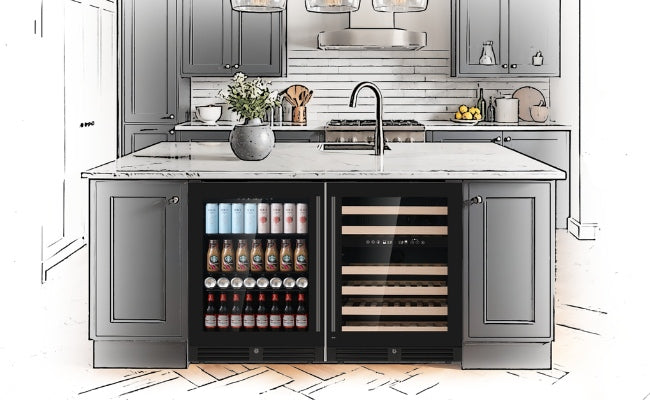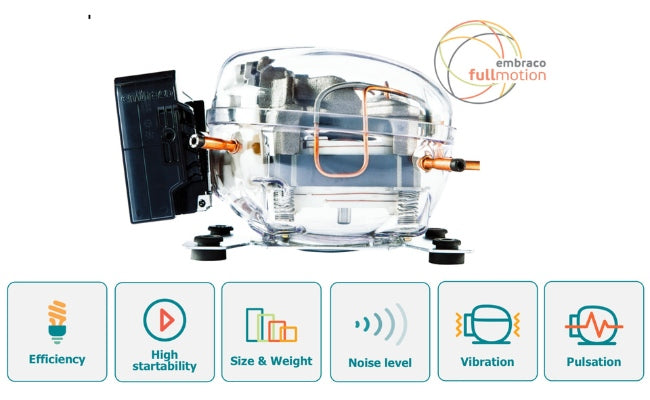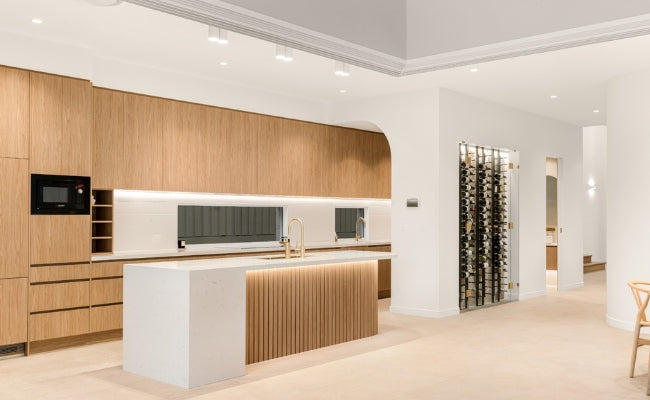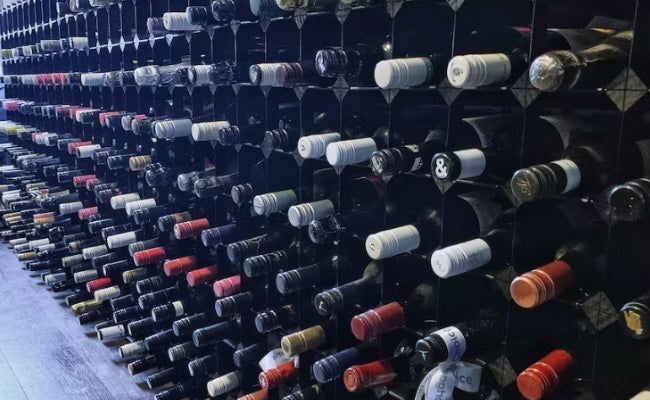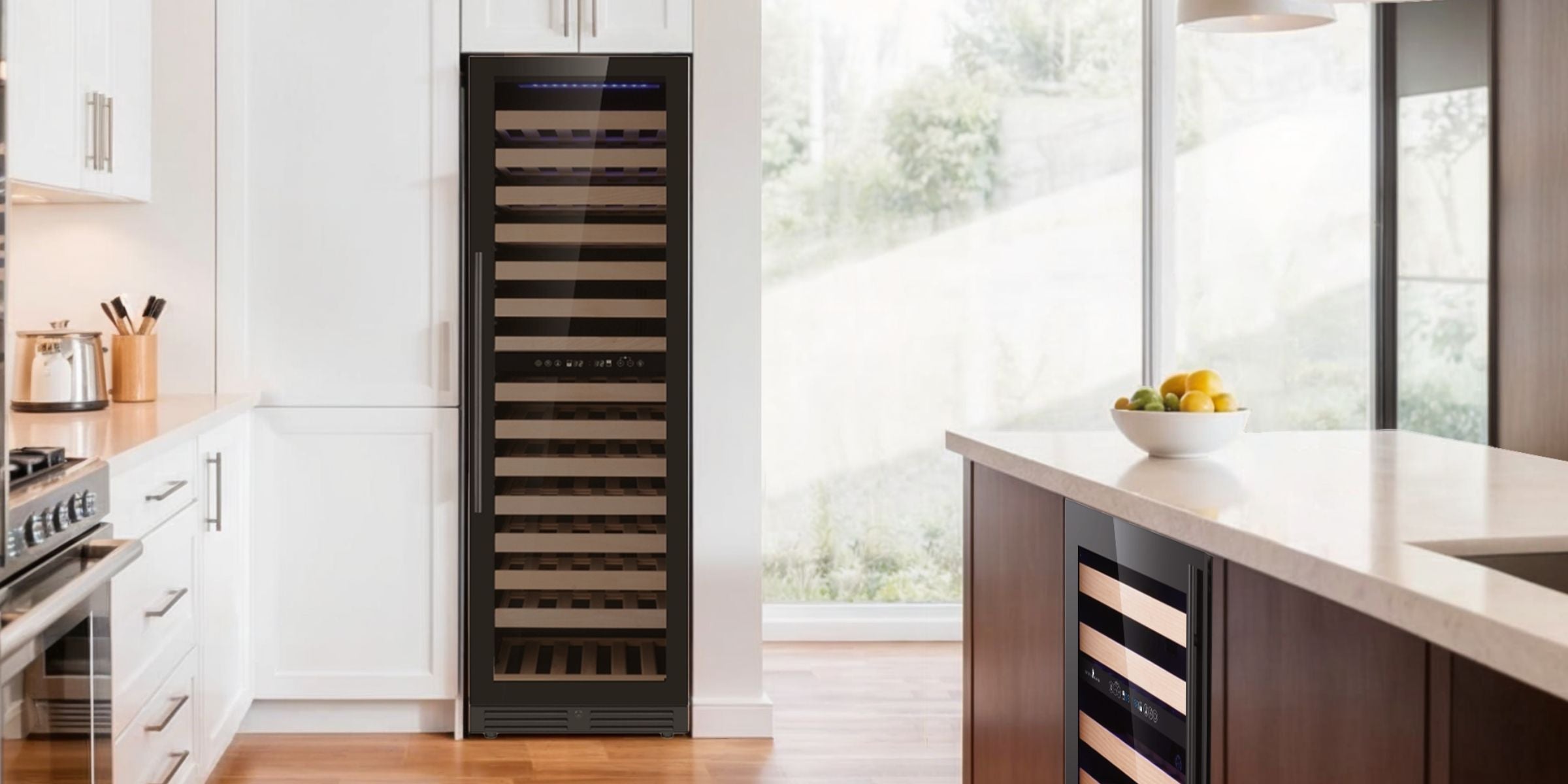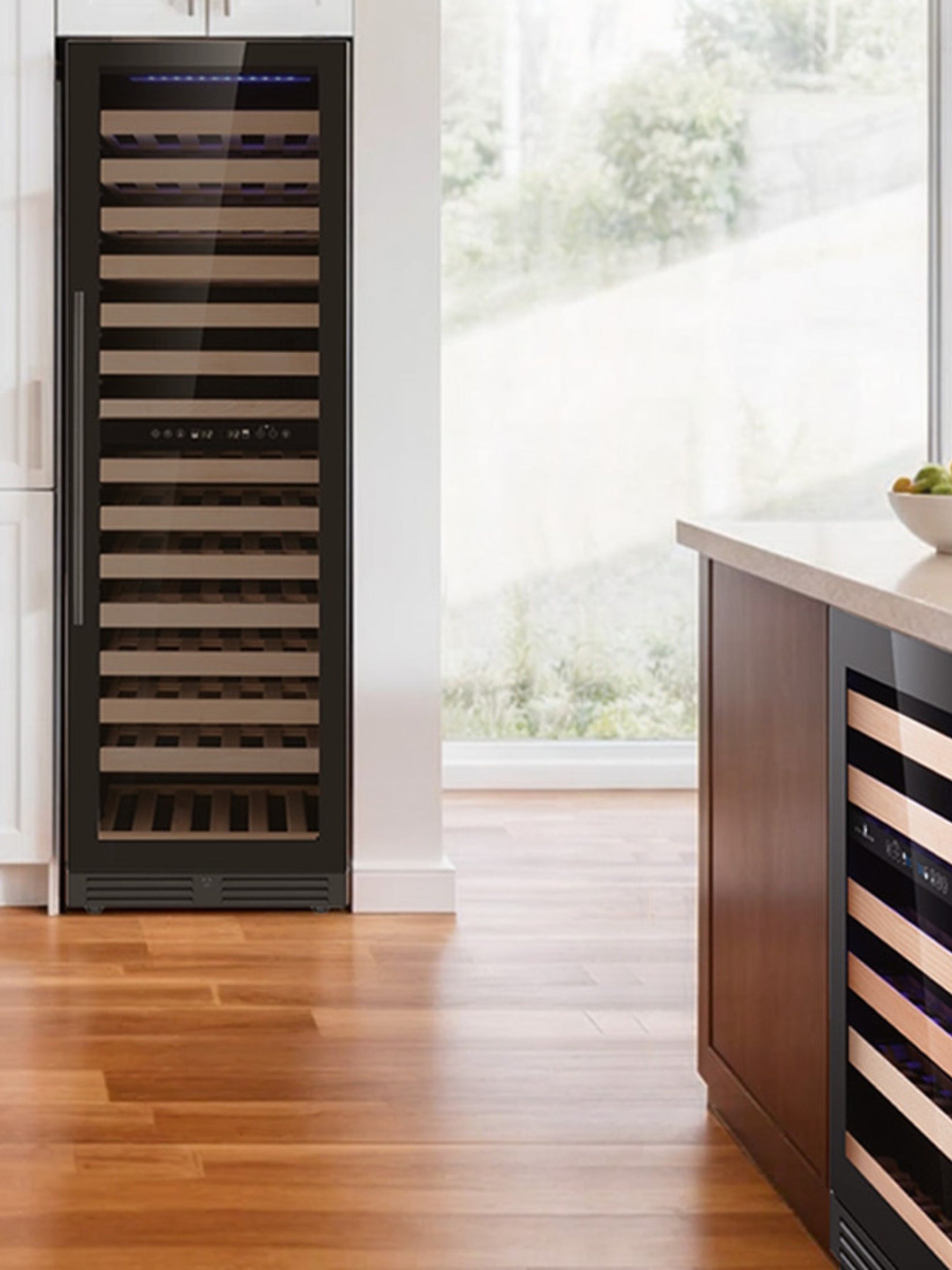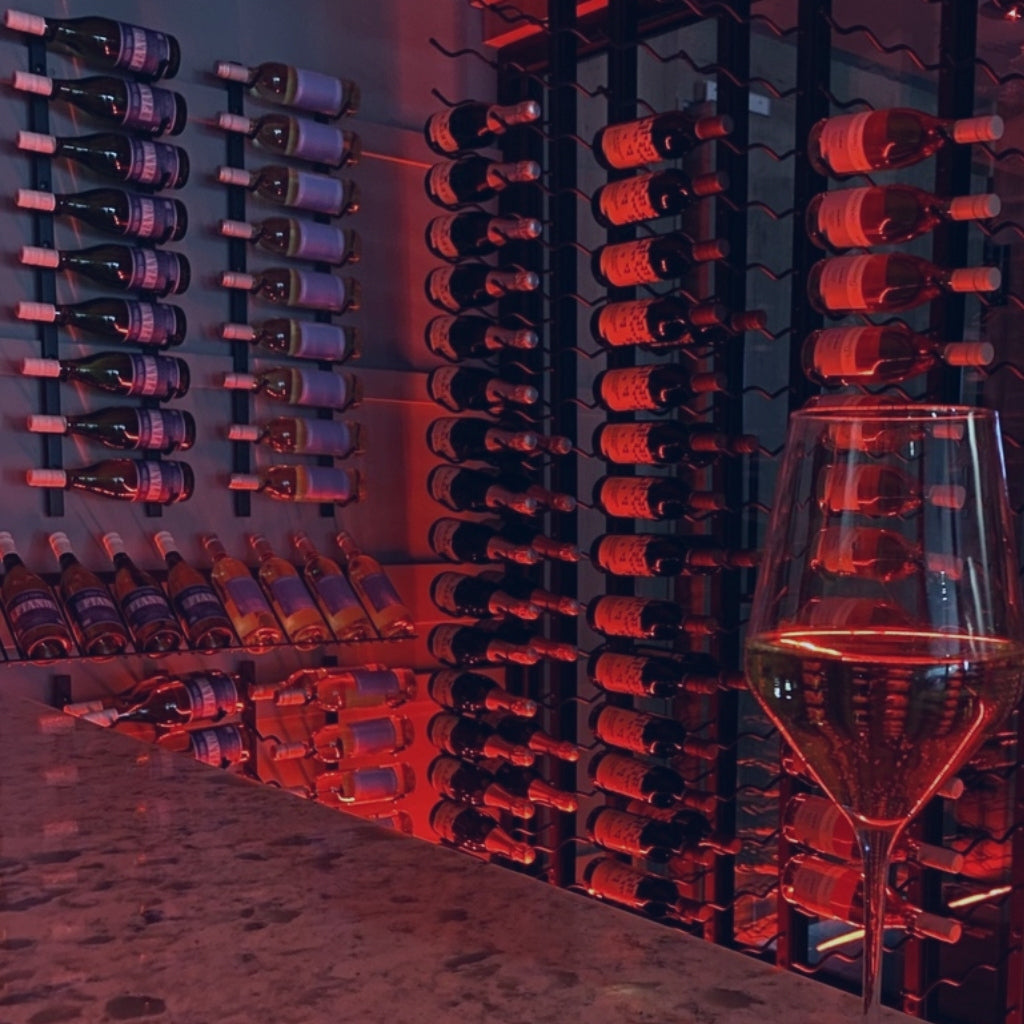
How to Build a Functional Wine Wall: A Complete Guide
A functional wine wall is more than just a display piece—it’s a stylish and practical storage solution that protects and showcases your wine collection. Whether you're a seasoned collector, a restaurant owner, or a homeowner looking to enhance your space, building a wine wall requires careful planning and execution.
In this guide, we’ll explore the key elements of designing and constructing a functional wine wall, including materials, layout, temperature control, lighting, and maintenance. By the end, you’ll have all the insights needed to create a stunning yet practical wine storage solution tailored to your needs.
Understanding the Purpose of a Wine Wall
Before you start designing, consider why you want a functional wine wall. Your objectives will influence the design, size, and features.
Common Uses:
-
Home Wine Storage: Showcasing an extensive collection while ensuring proper storage conditions.
-
Restaurant or Bar Display: Providing easy access while adding to the ambiance of the space.
-
Retail Wine Display: Enhancing visual appeal while maximizing storage efficiency.
-
Tasting Room Addition: Creating a stylish feature that complements the tasting experience.
-
Corporate Lounges: Impressing clients with a curated wine selection.
-
Hospitality Industry: Enhancing guest experiences in luxury hotels and resorts.
Knowing your purpose helps define the layout, material choices, and climate control solutions necessary for the best results.
Choosing the Right Location
The location of your functional wine wall plays a critical role in its efficiency and aesthetics. Consider the following:
Key Factors to Consider:
-
Temperature & Humidity: Avoid direct sunlight and areas with fluctuating temperatures.
-
Wall Structure: Ensure the wall can support the weight of racks and bottles.
-
Accessibility: The wine wall should be easily accessible but not in high-traffic areas where bottles can be bumped.
-
Aesthetic Integration: Choose a location that complements the overall design of the room.
-
Security Measures: If you have rare or expensive wines, consider locks or climate-controlled enclosures.
Popular Placement Options:
-
Dining Room or Kitchen: Seamlessly integrates with entertaining areas.
-
Living Room or Lounge: Creates a stylish focal point.
-
Hallways or Under Stairs: Maximizes unused space efficiently.
-
Cellar or Basement: Ideal for large collections requiring controlled conditions.
-
Outdoor Wine Walls: Incorporating covered, temperature-regulated enclosures for a modern touch.
If you are considering a wine wall for a commercial setting, such as a restaurant or wine bar, think about customer accessibility and branding. A well-designed wine wall can significantly enhance the customer experience, reinforcing your establishment’s aesthetic appeal.
Selecting the Best Wine Storage System
A functional wine wall needs the right storage system to balance accessibility, stability, and design. Here are some options:
Types of Wine Racks:
-
Wall-Mounted Metal Racks: Sleek, modern, and space-efficient.
-
Wooden Wine Pegs: Adds warmth and a classic look.
-
Glass-Enclosed Wine Walls: Protects wine while maintaining a contemporary aesthetic.
-
Floating Shelves: Creates a minimalist, artistic presentation.
-
Modular Storage Systems: Allows for easy expansion as your collection grows.
-
Hidden Compartment Shelving: Conceals select bottles for security and exclusivity.
Capacity Considerations:
-
Small collections (10–50 bottles) can be stored with a minimalist design.
-
Medium collections (50–200 bottles) require structured racking systems.
-
Large collections (200+ bottles) benefit from modular racks or custom-built solutions.
Beyond storage, consider additional features such as built-in drawers for accessories, dedicated slots for large-format bottles, or even a decanting station for added functionality.
Climate Control: Ensuring Proper Wine Storage Conditions
Temperature fluctuations and humidity imbalances can ruin wine. A well-designed functional wine wall must maintain the right storage conditions.
Ideal Wine Storage Conditions:
-
Temperature: 55–58°F (13–15°C)
-
Humidity: 50–70%
-
No Direct Sunlight: UV exposure can damage wine.
-
Minimal Vibration: Prevents premature aging and sediment disturbance.
-
Proper Ventilation: Ensures fresh airflow to prevent mold and mildew.
Climate Control Solutions:
-
Dedicated Wine Cooling Units: Essential for wine walls without natural temperature control.
-
Glass Enclosures with Seals: Helps maintain a stable environment.
-
Smart Sensors: Monitor temperature and humidity levels.
-
Wall Insulation: Prevents heat transfer and energy inefficiency.
-
Automated Climate Systems: Integrate with smart home controls for effortless adjustments.
If your wine wall is in an open space, consider installing a temperature-controlled cabinet within the design. This will allow you to store premium wines in ideal conditions while maintaining a beautiful display.
Designing an Aesthetically Pleasing and Functional Layout
Your wine wall should be both visually stunning and easy to use. Design choices should balance form and function.
Layout Considerations:
-
Horizontal vs. Vertical Storage: Horizontal prevents cork drying; vertical maximizes space.
-
Open vs. Enclosed Wine Wall: Open racks offer accessibility; glass enclosures provide climate control.
-
Label-Facing vs. Neck-Out Storage: Label-facing enhances visibility, while neck-out allows for compact storage.
-
Integrated Serving Areas: Incorporate a small counter for pouring and tasting wine.
Design Tips:
-
Use symmetry and spacing to create a clean, organized look.
-
Mix materials like wood, metal, and glass for a sophisticated finish.
-
Consider modular racking systems for scalability.
-
Add a focal point (such as a feature shelf or custom display).
-
Incorporate art pieces or engraved panels for a personalized touch.
A functional wine wall isn’t just about bottle storage—it’s about creating a space that enhances the wine experience. Consider adding a seating area, a built-in tasting counter, or even smart lighting controls that adjust based on mood or time of day.
Incorporating Lighting for Ambiance and Visibility
Proper lighting enhances the aesthetic of your functional wine wall while ensuring visibility for selection.
Best Lighting Options:
-
LED Strip Lighting: Highlights bottles without generating heat.
-
Recessed Spotlights: Focuses light on key areas.
-
Backlit Panels: Creates a soft glow and dramatic effect.
-
Smart Dimmable Lights: Allows for ambiance adjustments.
-
Motion-Sensor Lighting: Automatically illuminates the wall when someone approaches.
Avoid:
-
Direct Sunlight: Can heat and damage wine.
-
Harsh White Lighting: Can create glare and diminish ambiance.
Whether you're a wine enthusiast or a business owner, investing in a well-designed wine wall is a testament to your appreciation for fine wine and exquisite design. Follow this guide, personalize your setup, and enjoy the benefits of a truly functional and stylish wine wall.


